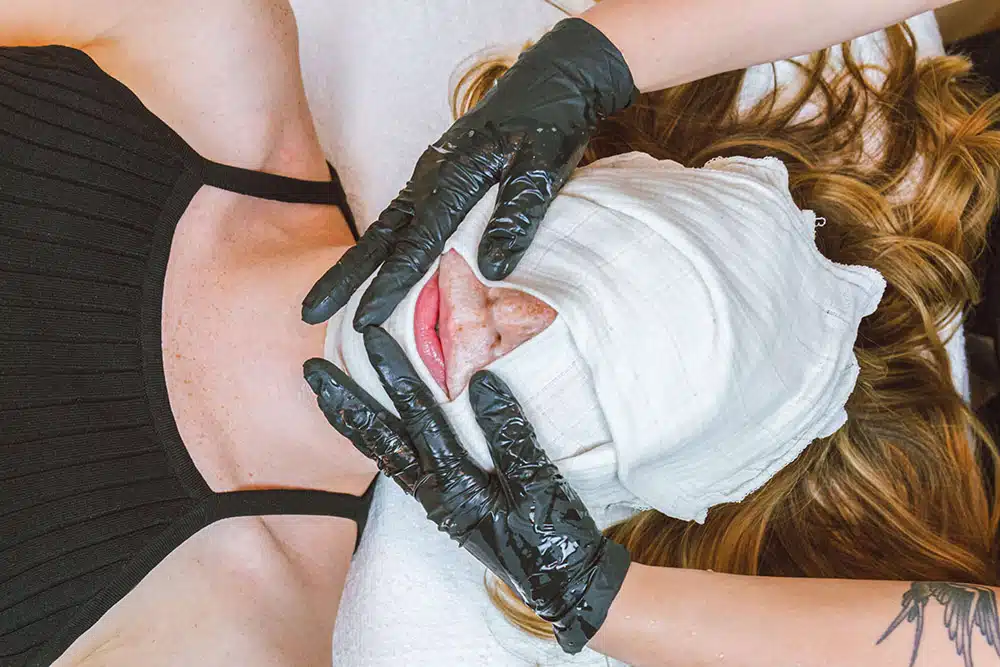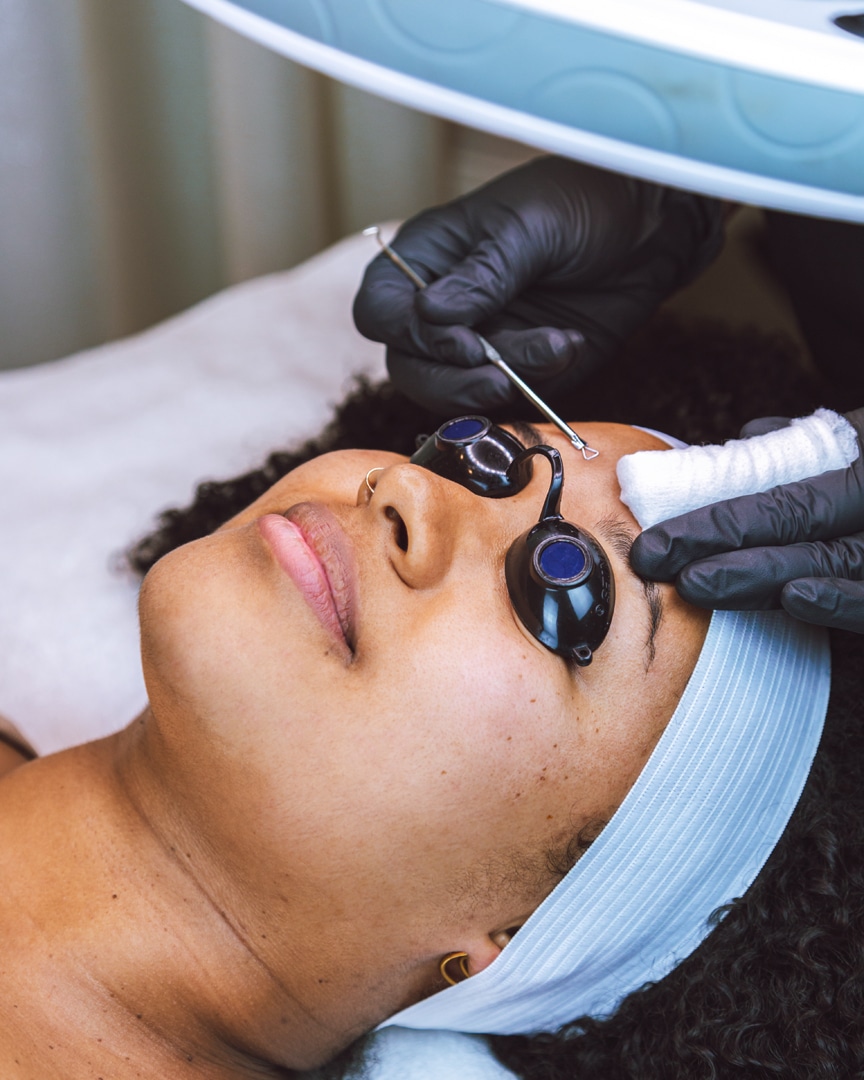If you thought acne would magically disappear once high school was over, you’re not alone. Acne doesn’t just belong to teenagers. In fact, millions of adults continue to struggle with breakouts well into their 20s, 30s, 40s, and beyond. Pimples, blackheads, cysts, and congestion can happen at any age, and when they do, they often feel just as frustrating as they did before.
Although teen and adult acne may look similar on the surface, the underlying causes, triggers, and best treatment strategies can be very different. Teen skin is usually oily and resilient; adult skin, on the other hand, tends to be drier, thinner, and more prone to inflammation and dark spots. That means the products and routines that work for a 15-year-old are rarely the same ones that work for a 35-year-old.
Understanding the type of acne you’re dealing with – whether it’s caused by a hormonal imbalance, stress, or is lifestyle-driven – is the first step to achieving clearer, calmer, healthier skin.
At Silver Mirror Facial Bar, our estheticians specialize in acne care for every age. Each treatment is fully customized based on your skin type, life stage, hormonal profile, and lifestyle habits. Whether you’re a teen building your first skincare routine or an adult battling persistent breakouts, our expert team is here to guide you toward real, lasting results.
In this blog, we’ll break down the key differences between teen and adult acne, explore what causes breakouts at different life stages, and dive into the most effective treatment approaches for each.
The Difference Between Teen and Adult Acne
Understanding how acne changes over time can make the treatment process a lot more effective and easier.
Teen Acne: The Classic T-Zone Breakout
Teen acne is often linked to puberty-driven hormonal surges, which increase androgen levels and trigger the sebaceous glands to produce excess oil. This results in a shiny T-zone (forehead, nose, and chin), clogged pores, whiteheads, blackheads, and inflamed pimples.
Teenage skin tends to be:
- Oilier
- More resilient and thicker
- Better able to tolerate stronger active ingredients
- Prone to congestion and surface-level breakouts
Since the pores are more active and visible during adolescence, breakouts tend to form quickly, but can resolve more quickly too, as long as the skin is cared for properly.
Adult Acne: Jawline, Cheeks, and “Hormonal” Patterns
While adult acne can resemble teen breakouts, the causes are usually very different. Adults often experience acne concentrated along the:
- Jawline
- Cheeks
- Chin and lower face
These areas are often associated with hormonal fluctuations, but adult acne is also strongly influenced by lifestyle factors such as stress, sleep, skincare habits, and environmental stressors.
Adult skin tends to be:
- Thinner and more sensitive
- Less oily but more dehydrated
- Slower to heal
- More prone to hyperpigmentation and post-acne marks
This means adults often need to balance acne treatment with anti-aging ingredients, barrier repair, and hydration.
Why Treatment Approaches Must Be Different
Teens usually benefit from:
- Oil control
- Pore cleaning
- Consistent cleansing
- Education on good skincare habits
Adults, however, require a more nuanced approach that addresses:
- Inflammation
- Hormonal fluctuations
- Skin barrier strength
- Post-acne pigmentation
- The interaction between stress and breakouts
Trying to treat adult acne like teen acne often results in dryness, irritation, and more breakouts. Similarly, giving teens adult-focused routines may overwhelm or dry out their skin. That’s why proper diagnosis and personalized treatment is essential.
Causes: What Triggers Acne at Different Ages
Regardless of age, acne forms when four key factors overlap:
- Excess oil production
- Dead skin cell buildup
- Acne-causing bacteria (C. acnes)
- Inflammation
However, the reasons behind these factors vary significantly depending on whether you’re a teen or an adult.
Hormones, stress, lifestyle, diet, environment, and overall health all influence how the skin behaves. That’s why understanding your trigger patterns is the key to finding the right treatment.
Let’s break down the most common acne triggers for teens and adults.
Teen Acne Triggers
Teenage acne is extremely common because puberty triggers hormonal changes that directly affect the skin. But hormones are only part of the story. Here are the biggest triggers behind teen breakouts:
1. Hormonal Changes
Puberty causes a surge in androgen hormones, which increase sebum (oil) production. Excess oil mixes with dead skin cells, clogging pores and creating the perfect environment for pimples.
2. Poor Skincare Habits
Teens often:
- Skip cleansing
- Sleep with makeup on
- Overuse harsh scrubs
- Rely on overly drying products
- Experiment with too many new items at once
These habits can weaken the skin barrier, increase inflammation, and worsen breakouts.
3. Diet and Lifestyle Choices
While food doesn’t “cause” acne, certain dietary habits can trigger or worsen inflammation.
Common teen diet culprits include:
- Sugary snacks and drinks
- Dairy products (especially milk)
- Fast food
- Processed snacks
Combined with inconsistent sleep and busy school schedules, these habits can exacerbate breakouts.
4. Heavy Makeup or Sports Equipment
Makeup that isn’t labeled non-comedogenic can clog pores quickly, especially if worn daily or not removed properly.
Teens also often experience breakouts from:
- Sweat buildup
- Helmet straps
- Chin guards
- Sports masks
This type of friction acne, sometimes called “maskne,” is very common in athletes.
Adult Acne Triggers
Adult acne is usually more complex because it’s influenced by a combination of internal and external factors. Here are the most common triggers:
1. Hormonal Fluctuations
Hormonal acne is common during:
- Menstrual cycles
- Pregnancy
- Postpartum changes
- Perimenopause
- Stopping or changing birth control
These hormonal shifts can lead to deeper, cystic acne—especially around the jawline and chin.
2. Chronic Stress
Adults often experience sustained stress related to:
- Work
- Family
- Finances
- Health
- Lifestyle changes
Stress increases cortisol, which boosts inflammation, slows healing, and disrupts oil production.
3. Skincare and Cosmetics
Adult acne is frequently caused by:
- Heavy moisturizers
- Oils or balms that clog pores
- Inadequate cleansing
- Over-exfoliation
- Using products too harsh for aging skin
Sometimes the products meant to help (like anti-aging creams) actually create congestion.
4. Diet and Lifestyle Factors
Common dietary triggers for adults include:
- Excess caffeine
- Alcohol
- High-glycemic foods
- Processed foods
- Dehydration
Adults may also experience breakouts linked to gut health issues, food intolerances, or restrictive diets.
5. Underlying Health Issues and Medications
Adult acne may be related to:
- Birth control changes
- Thyroid disorders
- PCOS
- Certain medications (including steroids or antidepressants)
A holistic approach is often required to identify and address these triggers.
Effective Acne Treatments for Teens
When treating teen acne, the goal is to balance oil production, keep pores clear, and establish consistent habits that support long-term skin health. The right approach can dramatically reduce breakouts while preventing future scarring.
1. Cleansing and Prevention
Teens should cleanse their face twice daily with gentle, effective ingredients like:
- Salicylic Acid: exfoliates inside pores
- Benzoyl Peroxide: kills acne-causing bacteria
- Tea Tree Oil: natural antibacterial benefits
Avoid harsh physical scrubs, which can cause micro-tears and worsen inflammation.
2. Balanced Hydration
Teen skin still needs moisture, even when it’s oily.
Look for:
- Lightweight, gel-based moisturizers
- Oil-free and non-comedogenic formulas
- Hydrating ingredients like hyaluronic acid or glycerin
A well-hydrated skin barrier reduces inflammation and supports healing.
3. Professional Treatments at Silver Mirror
At Silver Mirror, teens can benefit from:
- Acne-Fighting Facial to deep clean and remove congestion
- Gentle exfoliation to smooth and prevent clogged pores
- Expert extractions to safely clear blackheads and whiteheads
- LED blue light therapy to kill bacteria and reduce redness
- Customized treatment plans based on their skin type and lifestyle
These treatments promote clearer skin and faster healing, without the damage caused by DIY extraction attempts.
4. Education and Routine Building
Most teens simply need guidance. Our estheticians help teens:
- Build a simple, consistent routine
- Understand which products are safe and effective
- Learn why picking at skin leads to scars
- Avoid trends that damage the barrier
- Establish lifelong healthy skin habits
This education is as valuable as the treatment itself.
5. Long-Term Maintenance
Combining regular facials with a simple at-home routine delivers the best results for teen acne. Monthly facials help keep pores clear, reduce inflammation, and prevent new breakouts.
Silver Mirror specializes in teaching teens how to care for their skin early, setting them up for clearer, healthier skin well into adulthood.
Effective Adult Acne Treatments
Adult acne requires a more comprehensive and gentle approach that considers both current breakouts and long-term skin health.
1. Customized, Gentle Approach
Since adult skin is more sensitive and often dehydrated, treatments must focus on:
- Reducing inflammation
- Clearing pores
- Repairing the moisture barrier
- Supporting anti-aging goals
A “less is more” philosophy often works best.
2. Professional Acne Facials at Silver Mirror
Silver Mirror’s adult acne facials are tailored to each client’s needs and may include:
- Deep cleansing to remove buildup
- Exfoliation using safe, effective enzymes or acids
- Manual extractions
- Hydrating masks
- LED light therapy
- Personalized product recommendations
These facials balance oil, smooth texture, and support healing, all while minimizing irritation.
3. Chemical Peels and Enzyme Treatments
Adults often struggle with lingering hyperpigmentation or uneven texture after a breakout. Chemical peels and enzyme exfoliation help:
- Fade dark spots
- Reduce fine lines
- Improve skin tone
- Encourage cell turnover
- Brighten dullness
This is especially beneficial for skin that heals more slowly with age.
4. Hydration and Barrier Repair
Because adult skin can become dehydrated from acne treatments, barrier-friendly ingredients are essential, including:
- Niacinamide (calming, oil-balancing)
- Hyaluronic acid (hydration)
- Ceramides (barrier strength)
- Squalane (lightweight moisture)
Healthy skin is less reactive and therefore less acne-prone.
5. Lifestyle and Hormonal Management
Silver Mirror estheticians often help clients identify underlying triggers and build habits to support clearer skin, such as:
- Prioritizing sleep
- Reducing caffeine
- Stress management techniques
- Improving diet and hydration
- Avoiding pore-clogging makeup or skincare products
Treating the whole picture leads to better long-term results.
6. Product Guidance
Using the wrong products is one of the biggest causes of adult acne.
Our experts recommend:
- Non-comedogenic moisturizers
- Gentle exfoliants
- Anti-inflammatory serums
- Acne-safe sunscreen
- Minimalist routines that prevent over-irritation
Product curation is as important as professional treatments.
7. Long-Term Results
The best outcomes come from pairing in-spa care with at-home products recommended by trained estheticians. Adults benefit from routine monthly facials and a targeted daily regimen that prevents future breakouts while supporting healthy aging.
The Bottom Line
Both teen acne and adult acne can be effectively treated, no matter your age or skin type, as long as you take the right approach. The key differences lie in the causes, patterns, and treatment needs for each.
- Teen acne typically requires consistent cleansing, oil control, and education on building healthy routines.
- Adult acne demands a gentler, inflammation-focused approach that considers hormonal fluctuations, stress, and lifestyle patterns.
Self-diagnosing or experimenting with random over-the-counter products often worsens breakouts. Instead, personalized care from a trained esthetician ensures your skin gets exactly what it needs, no more, no less.
At Silver Mirror Facial Bar, our licensed estheticians specialize in customized acne treatments for both teens and adults. Whether you’re dealing with stubborn breakouts, hormonal flare-ups, or long-term acne scarring, we’re here to build a treatment plan tailored to your age, skin type, and lifestyle.
Book your Acne-Fighting Facial today and start your journey to clear, confident skin at any age.
By



